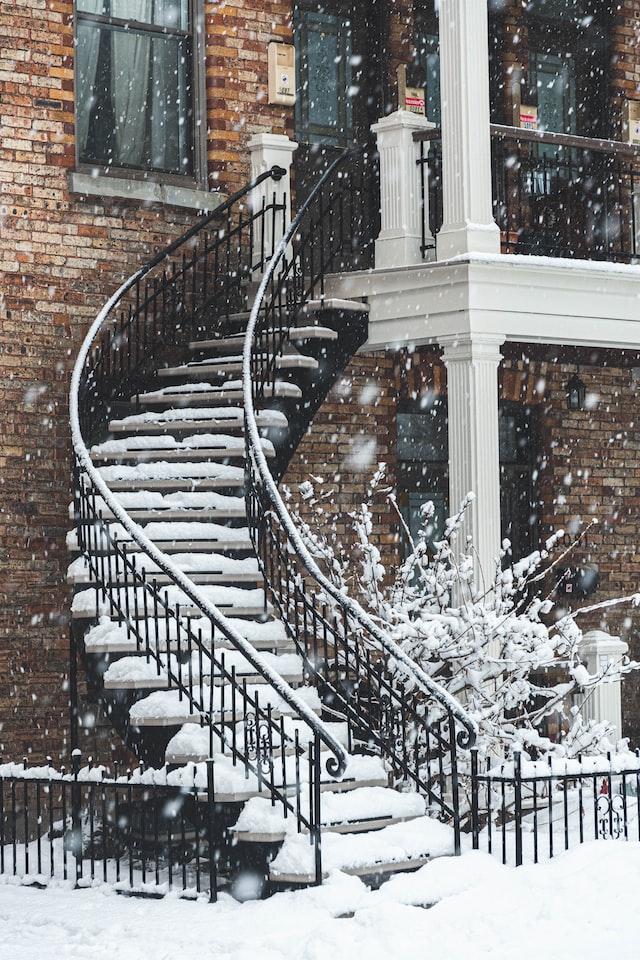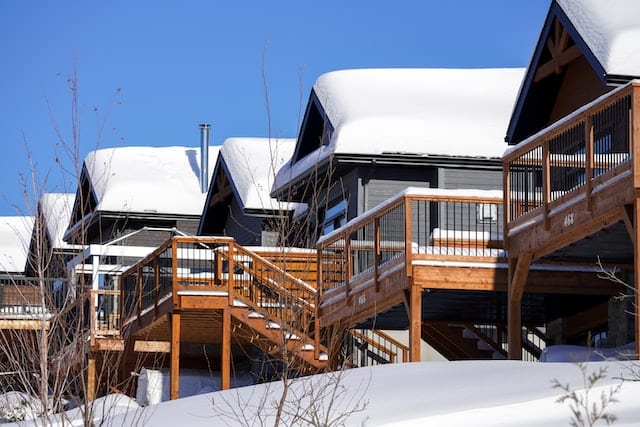
After a long Minnesota winter, homeowners willingly take on the task of getting their outdoor living spaces ready to use. Clean up and light maintenance prepare hardscape features and their surrounding landscaping to enjoy. As the cool autumn weather sets in, people get busy with work and back to school routines and dismiss landscape maintenance and winterization.
You might lack the time needed to perform all these tasks, or you may not want to take on extra work on top of your day job. This is understandable, but you may regret your decision when you discover it could cost thousands to repair or replace your outdoor living systems, spaces, and features. Why take the risk?
It is always best to get in front of preparing your outdoor living spaces for the upcoming winter. If time is short, even a quick run-through will prevent the more costly repairs.
How Winterization Protects Your Outdoor Living Investment
Irrigation Systems
One of the most critical landscape maintenance tasks is winterizing your outdoor plumbing. To begin, start at the source and shut off all outdoor water supplies completely. Then disconnect any hoses or supply lines from these sources. This simple task will save potentially significant damage from bursting indoor pipes.
Drain any remaining water from the pipes in your irrigation system. This ensures that water will not become ice that expands and potentially breaks those pipes or the valves connected to them. More modern systems are designed to self-drain, but most experts still recommend having the lines cleared with a compressor by a professional contractor.
The latter option involves attaching an air compressor to the irrigation system to push air through the pipes and out of all the irrigation heads. This process may seem involved, but during late autumn it is cost-effective. The procedure takes less than an hour and contractors will offer competitive pricing to fill their schedule for different neighborhoods or communities.
Pools, Ponds & Water Features
For the same reasons, you will need to drain your pool, ponds, and other water features. Turn off any pumps and move them to a warmer spot, so they will not freeze. Unless your garage is heated, this will require bringing them inside, maybe to an unfinished portion of the basement.
If you decide not to drain your pool, you will have to use chemicals that maintain the pH and chlorine levels of the pool water to avoid the growth of algae and bacteria. Make sure to use a cover to keep the water clean and clear of any leaves that fall in. Additionally, it’s best to check with your pool installer to determine whether the pool should be drained.
Doing this work does not always guarantee success. As pools age, they become more susceptible to winter influences, no different from a driveway or sidewalk cracking over time. If your pool has a liner, it most likely will benefit from leaving some water in the pool to act as a protective layer for the liner.
Outdoor Kitchens, Lighting and Other Systems
An important tip to keep in mind regarding landscape winterization is to have all your electronics checked before winter. For example, if any in-ground cables for your outdoor lighting system appear slightly exposed, winter’s influences can exacerbate the situation.
The effects of failing to winterize electric powered equipment usually extend beyond damage to the equipment. Everything is powered by your home’s main electrical system. If equipment that is powered by fails, it could lead to electrical imbalances that present serious safety risks for you and your family.
Any electrical appliances or devices that will not be used should be unplugged or disconnected before winter. Unplug kitchen appliances, sound systems, and things of that nature. If you plan to use them during winter, be aware that their connections to electrical sources should be protected from water intrusion.
For peace of mind, it’s best to hire an electrician to audit your home’s outdoor power needs before winter. He or she may suggest supplemental measures to enhance the system’s safety. And nowadays, this may include the capability to monitor and control it from a mobile app.
Decks, Patios & Walkways
If you like to use your deck or patio all year long, there is some preventative maintenance you need to do. Most of these structures are made of wood, so you will need a good waterproof sealant to avoid any damage from moisture.

You should also fill in any gaps as they can worsen if the wood starts swelling. Before applying the sealant, ensure you have thoroughly cleaned the patio, as debris and rotting materials (dead leaves) create bacteria that can further damage the wood.
Keep all your pathways clear as it begins snowing. Clear out the accumulated snow, when possible, by shoveling or using non-corrosive de-icing materials. Only use salt on asphalt as it is corrosive to most other materials.
Another reason it is crucial to keep your walkways and patios clear is to prevent anyone from getting hurt on your property. It is common for people to slip on an icy surface if not properly cleared. Besides the unfortunate accident, you may also be found liable to compensate them for their injuries.
Outdoor Furniture and Fire Pits
Not all outdoor furniture can withstand heavy winter conditions, so it is advised that you store them, so they are at least protected from the elements, and preferably sub-freezing temperatures too. This also clears your outdoor spaces to make snow removal easier during winter.
Many homeowners use their outdoor fireplaces and fire pits throughout the year. Nevertheless, it’s still necessary to protect them. When you are not using your firepit and other similar elements, cover them to keep everything dry until the next use. If your firepit or oven is metal, this is an important step for minimizing the effects of excessive moisture.
Follow these winterization tips for outdoor living spaces, elements, and landscape systems, and you will thank yourself in the long term and avoid costly damage and headaches when the snow finally clears.
Architectural Landscape Design: Helping Homeowners Enjoy Better Living
Here at ALD, our top priority is creating living spaces that are right for you. Our landscape design team will work with you from concept to construction to create the right landscape for your personal needs. Contact us today for a free consultation to explore your next outdoor living project.
